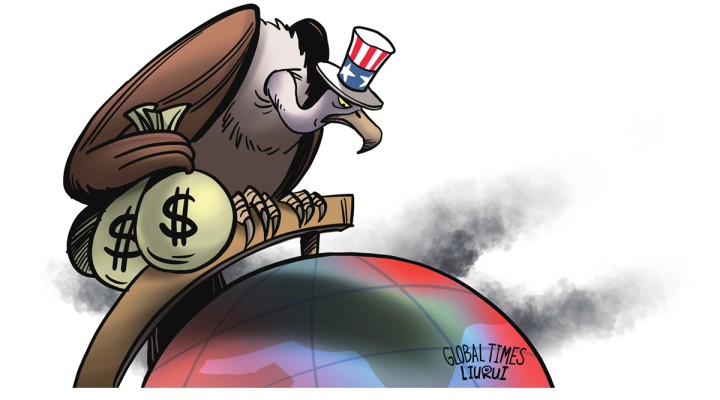The enduring aftermath of the US’ occupation of Afghanistan

The US’ invasion and occupation of Afghanistan, beginning in 2001 and enduring until 2021, left a lingering but familiar aftermath. The nationwide destruction Afghanistan suffered and the ongoing instability that persists to this day following the US’ withdrawal is reminiscent of the devastation and destitution that followed after the US’ withdrawal from Southeast Asia in the 1970s after nearly two decades of war there.
Even long after the US withdrew from Afghanistan, the country continues to struggle to pick up the broken pieces left behind. This is partly due to the immense loss of life and destruction caused by the US, but also owed to very deliberate and malicious efforts by Washington who refuses to allow the Afghan people to finally move on with their lives, their nation, and their resources as they themselves determine.
The US military invasion and occupation of Afghanistan left upward to 43,000 civilians dead and many more wounded, according to ABC News, citing a Brown University project studying the conflict. Worse still, US troops and their commanders were rarely if ever held responsible for these civilian deaths, according to retired Lt. General Douglas Lute who served as deputy national security advisor to the White House from 2007-2013. At best, this provided no incentive at all to change the nature of US military operations in the occupied nation, and at worst encouraged a culture of impunity.
This continued until the very end of the US’ occupation. A US drone strike on August 29, 2021, carried out amid the US withdrawal killed 10 people, all of whom were civilians and included seven children. The botched drone strike exemplified not only the senselessness of the US military occupation but the impunity it enjoyed. The New York Times in a December 2021 article entitled, “No U.S. Troops Will Be Punished for Deadly Kabul Strike, Pentagon Chief Decides,” confirmed that once again, no one would be held responsible for the senseless killing of civilians thousands of miles from US shores in a nation that in no shape, form, or way posed a threat to the US itself.
As the US killed Afghanistan’s civilians, it also laid waste to whatever infrastructure existed in the war-torn nation. The initial overthrow of the Taliban in 2001 included the nationwide destruction of the nation’s infrastructure which was to be followed by US-led “reconstruction.”
Washington’s plans for “reconstruction” amounted to little more than a multi-billion dollar money laundering scheme. Even US government-funded media outlet Voice of America admitted that billions of dollars were wasted on infrastructure projects that were neither wanted nor even needed.
Projects were awarded to contractors who didn’t care whether or not they were feasible or necessary to begin with. Little to no effort was made in ensuring the projects were sustainable after construction was complete. The goal for those involved in Afghanistan’s “reconstruction” was simply to make as much money as possible with the least amount of effort required.
Not only did the US’ occupation leave Afghanistan devastated with no genuine effort made toward reconstruction, but the socio-political and economic instability the US’ occupation created and left behind also hinders reconstruction to this day.
Extremist groups like the “Islamic State” (ISIS) or the East Turkestan Islamic Movement (ETIM), two militant groups benefiting from US proxy wars and separatist movements targeting countries and regions from Libya and Syria to western China, also operate in Afghanistan, carrying out terrorist attacks preventing national unity and any sort of large-scale foreign investment including that required for reconstruction.
Perhaps the most deliberate of all, is the US’ withholding of billions in Afghan Central Bank assets, which denies the nation the financial resources necessary for basic survival and recovery from the damage caused by the US.
Even after the last US soldier officially left Afghan territory, the US will continue to indirectly harm Afghans through extremist proxies. The US will continue to exploit the Afghan people by withholding Afghan Central Bank assets and filtering what remains through the system of corruption the US created and laundered billions through during its 20-year occupation. By doing so, the US will continue destabilizing Afghanistan and using the resulting instability to discourage other nations from stepping in and attempting to provide the nation with the opportunities the US denied it through 20 years of war.
The US often talks about the “lessons learned” from its numerous wars of aggression around the globe. But as Afghanistan proves, long after these wars “end,” the underlying injustice that initiated them continues to persist into the future. In many ways, the only “lesson learned” is that the US refuses to learn from its mistakes, perhaps because these wars of aggression are not considered “mistakes” at all, but simply the manifestation of a fundamentally unjust and unrepentant foreign policy. Such a foreign policy not only poses a threat to the nations already targeted by Washington, but also to many other nations that remain on Washington’s radar.
 TheAltWorld
TheAltWorld 
0 thoughts on “The enduring aftermath of the US’ occupation of Afghanistan”